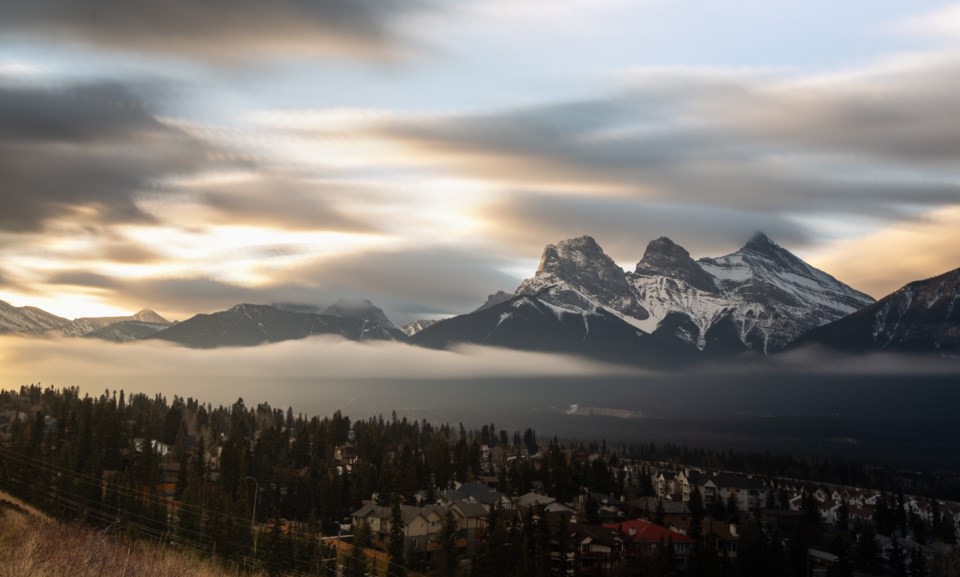BANFF – The municipalities of Banff, Jasper and Canmore have hired a prominent public affairs firm to help them lobby the provincial government for some form of special status as tourism-based communities.
New West Public Affairs, a western-based national public affairs firm with headquarters in Calgary, is helping the three municipalities come up with advocacy strategies and with facilitating meetings with MLAs and provincial bureaucrats from various government departments.
“Over time, there’s been a number of different strategies and we’ve been successful in building up various components of our case,” said Canmore Mayor Sean Krausert.
“But obviously we have not yet been successful in achieving some recognition of special status as tourism-based economies.”
The topic of resort municipality status has been an ongoing discussion spanning successive provincial governments and more than 20 different ministers, including ministers with municipal affairs, tourism and culture and the treasury board.
Over the past two decades, the towns have tried hard to get their message across to the province, but have been unable to get any traction for more revenue tools, such as a portion of the hotel tax or real estate transfer tax among others, to support their tourism-based economies.
In recent years, the three municipalities lobbied for an amendment to the Municipal Government Act so they would be legally recognized as tourism-based communities, however, those efforts also proved unsuccessful.
They’ve also tried to change how the province determines population size because many grants are based on a per capita funding formula and the towns of Canmore, Banff and Jasper do not get to count their non-permanent resident population, which swells in the summer months.
Currently, the provincial government applies a tourism tax on overnight accommodations such as hotel rooms and bed and breakfasts, however, none of that money is funnelled back to the municipalities from where it is derived.
Mayor Krausert was mum on the latest strategies, not wanting to hamper discussions.
“We’re still introducing it to the MLAs and so it would be putting the cart ahead of the horse by having it come out in the news before we actually had a chance to talk to them directly,” he said.
“It’s largely based on becoming more competitive with other locations, and overcoming the funding cap that is currently being downloaded to our property taxpayers.”
Banff Mayor Corrie DiManno said she hopes doing the work as a tri-town initiative will make their voices stronger and align their messages.
“At the end of the day, we’re hoping the government of Alberta will recognize the challenges that our communities face as tourism-based communities,” she said.
“All three of our communities have a visitor population that surpasses our resident tax base, and so our residents currently help pay for that visitor infrastructure…we’re looking for that recognition to help take the burden off of our residents.”
In neighbouring British Columbia, there is a Resort Municipality Initiative (RMI) program to support small, tourism-based municipalities to build and diversify their tourism infrastructure and deliver exceptional visitor experiences.
At least 14 municipalities in B.C. have been able to secure resort municipality status, including the nearby towns of Golden, Radium, Kimberley, Fernie and Revelstoke.
The revenue is collected by the province and divvied out to each town through a funding formula based on the number of accommodation units each town has.
In the 2022 budget, the B.C. government committed to providing $39 million over three years for the RMI to fund infrastructure projects.
Prince Edward Island also has the Resort Municipality of Stanley Bridge, Hope River, Bayview, Cavendish and North Rustico on the north end of the island.
Mayor Krausert said the Town of Canmore spends 65 per cent more on infrastructure costs than other municipalities with the same population.
“The cost of that is going to our taxpayers, as opposed to in other jurisdictions, they are covered through the revenue that’s generated through tourism,” he said.
“We are looking at ways we can work with the government to recognize that if they would like to see increased tourism revenues, they need to invest in that business so that we can better handle the numbers of people, that we can do so in a way that works well for our community and that such is not on the shoulders of our taxpayers.”



